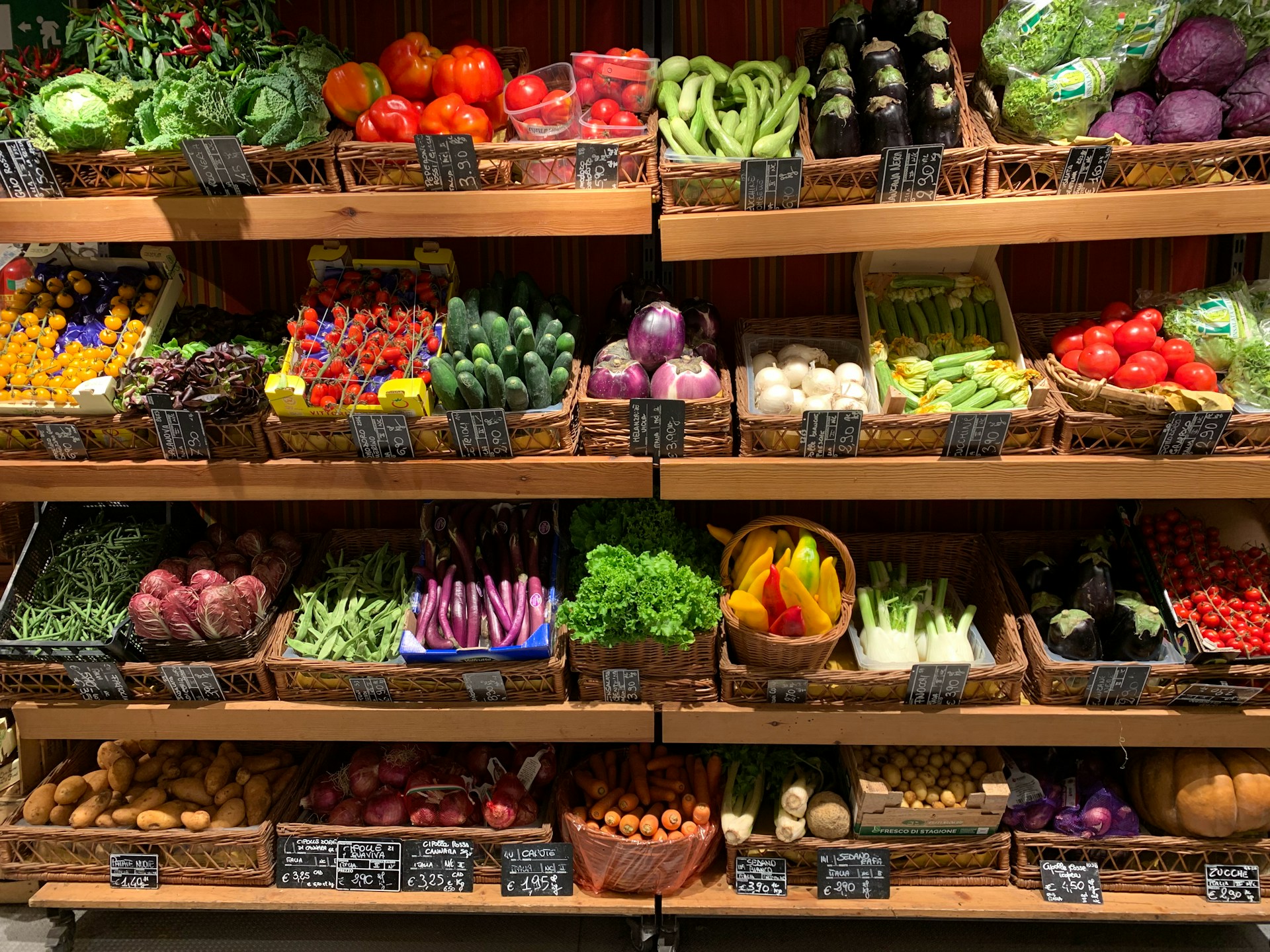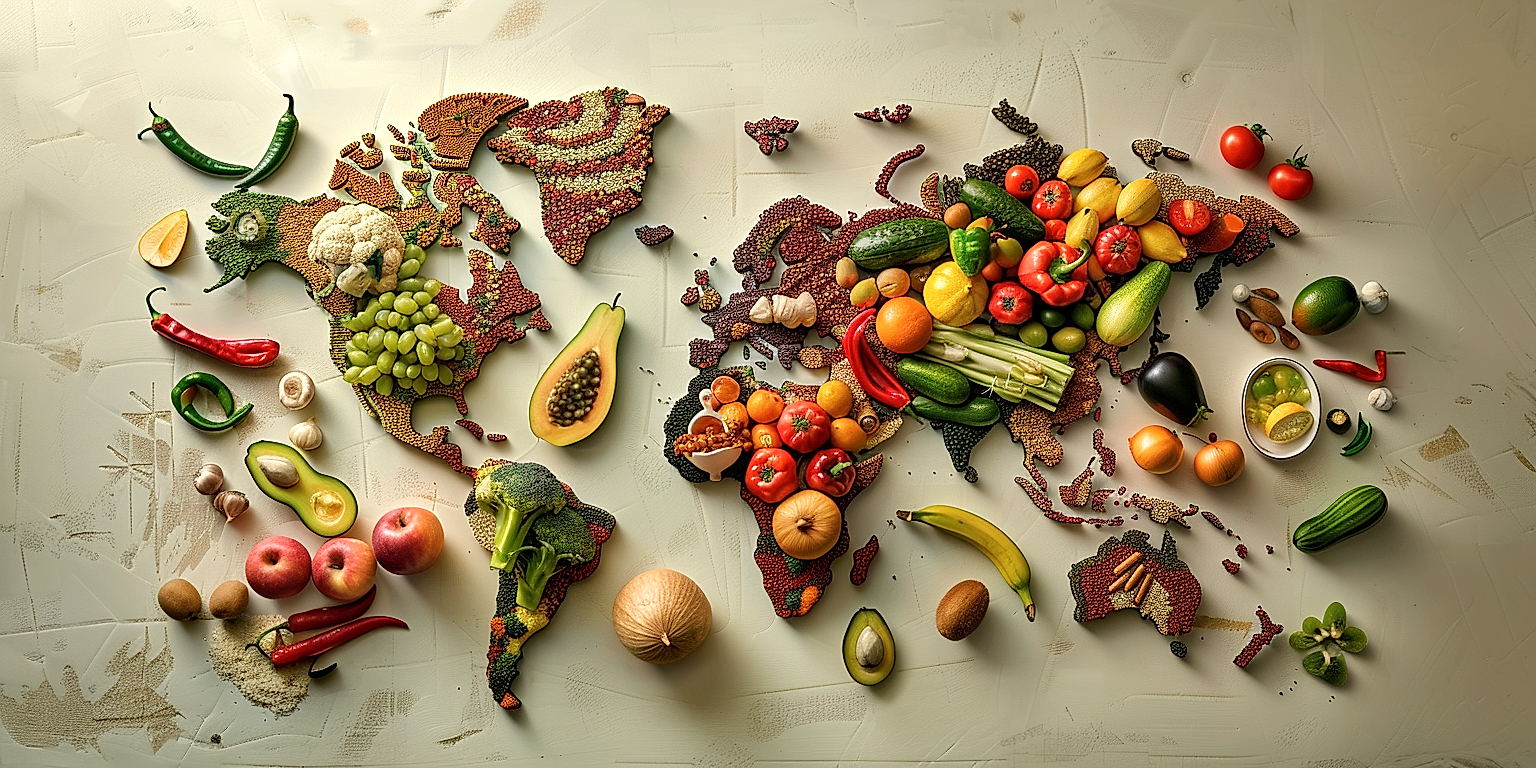In the contemporary market landscape, understanding consumer behavior is undoubtedly a prerequisite for success in the packaged food industry.
This holds particularly true for the realm of processed fruits and vegetables.
Diverse factors crank up the complexity of deciphering the purchasing choices of today’s consumer.
It’s an intricate blend of health concerns, flavor profiles, convenience, and various socio-economic nuances.
Research shows a noticeable shift in the buying behavior of consumers, increasingly impacting the sales in this industry.
Unpacking the granular details of these preferences can help manufacturers cater to these changing trends and flourish in this market.
Contents
- Consumer Preferences Impacting Processed Produce Sales
- 1. Desire for Organic and Natural Products
- 2. Demand for Convenience and Easy-to-Prepare Foods
- 3. Interest in Vegetarian and Vegan Options
- 4. Preference for nutrient-rich, healthy options.
- 5. Trend towards gluten-free or allergy-friendly foods.
- 6. Want for sustainable and ethically-sourced produce.
- 7. Liking for a variety of tastes and textures.
- 8. Need for affordable, value-for-money products.
- 9. Wish for Innovative and Novel Food Products
- 10. Trust in Known Brands and Labeling
- The Bottom Line
Consumer Preferences Impacting Processed Produce Sales
1. Desire for Organic and Natural Products
One of the most significant trends impacting the sales of processed produce is the burgeoning consumer desire for organic and natural products.
This shift in consumption preferences has been spurred largely by a growing awareness of the potential health implications associated with consuming foods grown with synthetic pesticides and fertilizers.
Organic produce is characterized by the lack of these potentially harmful chemicals, leading to increased demand among health-conscious consumers.
Additionally, these products are perceived to be more sustainably farmed, further driving their popularity.
A more profound understanding of the interconnectedness of health and environment has encouraged more people to make the switch to organic and natural products.
Consumers are now more than ever keen on investing in their health by choosing products that align with their health and wellness goals.
Moreover, the term ‘natural’ has gained ascension among consumers, with many interpreting it to mean that the product is free of artificial ingredients or preservatives.
The general public sentiment towards these natural products is overwhelmingly positive, reinforcing their place in the market.
The increased demand has led to a significant impact on sales of processed produce that fulfill these criteria.
Thus, retailers and food manufacturers are consistently adapting their offerings to cater to these preferences.
The result is a greater variety of organic and natural products available in the market than ever before.
When it comes to processed produce specifically, consumers expect these products to retain their natural characteristics, despite undergoing some form of processing or preservation.
For instance, they expect the produce to be minimally processed, contain no artificial ingredients, and have a transparent and traceable production process.
This desire has also led to the emergence of new processing technologies, such as high-pressure processing (HPP), which retains the nutritional profile of the product while extending its shelf life.
Therefore, the consumer desire for organic and natural products is not only influencing the types of products available in the market, but also the methods in which they are processed.
This trend is fundamentally reshaping the processed produce industry and is likely to have a continued impact on sales trends in the foreseeable future.
2. Demand for Convenience and Easy-to-Prepare Foods
The growing demand for convenience and easy-to-prepare foods significantly influences consumer preferences and, therefore, impacts processed produce sales.
People’s fast-paced lifestyles increasingly require quick, hassle-free food preparation experiences.
Many consumers do not have the time to prepare meals from scratch, leading to a surge in demand for convenient food products.
This trend is expected to continue, with a further increase in the need for convenience foods that are also healthy, tasty, and nutritionally balanced.
Within the processed produce industry, there is a clear drive for innovation to meet the rising demand for convenience while retaining nutritional value.
Already, we see more brands venturing into producing convenient, ready-to-eat produce, such as pre-washed salads, pre-cut fruits, vegetable mixes, and ready-to-cook meal kits.
These options not only offer ease of use to the consumer but minimize meal prep time — a key factor for many.
Notably, the popularity of these products doesn’t solely rely on convenience; taste, texture, and freshness also play a significant role in consumer preference.
As a result, products that can deliver on all these fronts are much more likely to succeed in the market.
Evidently, higher income consumers, due to their purchasing power, are the key drivers of the demand for convenience and easy-to-prepare foods.
These consumers are often willing to pay a premium for convenience, thereby creating a lucrative market segment for higher-end, value-added convenient produce products.
However, affordable convenience is equally critical for a substantial part of the market; this seen by the rising popularity of affordable, ready-to-eat meals in discount and budget stores.
Thus, the processed food industry needs to ensure it caters for a diverse range of consumer needs in this regard, with a focus on providing convenient but nutritious options that are also affordable.
From meal kits and prepared salads to veggie noodles and smoothie packs, the array of convenience options available in the produce department is nearly endless.
In essence, ready-to-eat, and easy-to-prepare foods are becoming the norm more than the exception in grocery stores.
As a result, companies that effectively tap into this growing trend stand a chance to significantly impact their sales of processed produce and overall market dominance.
3. Interest in Vegetarian and Vegan Options
The popularity of vegetarian and vegan diets has seen a significant increase in recent years, making it a vital factor influencing consumer preferences in the food industry.
Consumers are increasingly seeking out processed produce that is devoid of animal products, aligning with their dietary choices.
Simultaneously, the rising awareness about the ill-effects of high meat consumption on both personal health and the environment is fueling the demand for plant-based alternatives.
Electing a vegetarian or vegan diet is no longer confined to ideological or ethical reasons; it is now seen as a beneficial lifestyle choice promoting health and vitality.
Manufacturers are responding to these consumer preferences by introducing a broader range of processed plant-based foods.
These range from meat substitutes like tofu and seitan to vegan cheese and dairy-free alternatives.
Vegan junk food, including plant-based burgers, nuggets, and pizzas, are flooding the market, addressing the need for convenience and taste along with dietary constraints.
Foods that are labelled as vegetarian or vegan-friendly are seen as more trustworthy and appealing by consumers invested in these diets.
These labels not only assure them of the product’s contents but also its values regarding animal welfare and environmental sustainability.
A push for healthier diets by health organizations and the media is indirectly promoting the demand for vegetarian and vegan options.
Interest in plant-based diets has gone beyond a trend – it has become a significant shift in eating habits that is impacting buying decisions among consumers.
The preference for processed produce with such dietary categorizations is not limited to those who strictly follow these diets.
A section of consumers called flexitarians, who oscillate between plant-based and meat-inclusive diets, also contribute significantly to this trend.
Manufacturers can leverage the vegetarian and vegan movement to create products that meet unique taste and nutrition profiles catering to a wider audience.
Moreover, the advancement of food technology is producing innovative plant-based products that mimic the taste and texture of meat, appealing to both vegetarians and meat-eaters alike.
In the processed produce industry, catering to the growing vegetarian and vegan population can serve as a platform for innovation and expansion, ultimately impacting sales positively.
4. Preference for nutrient-rich, healthy options.
Consumers today are becoming increasingly conscious about their health and fitness.
This is reflected in the growing preference for nutrient-rich and healthy options in their diet, which significantly impacts the sales of processed produce.
People are proactively seeking out products that are low in harmful ingredients like saturated fats, sugars, and sodium, and high in advantageous nutrients such as fiber, vitamins, and minerals.
Processed foods often have a negative reputation for being unhealthy, but many companies are working hard to change this perception.
They are not only minimizing the use of harmful ingredients, but also fortifying their products with essential nutrients.
As a result, processed foods that advertise their health benefits and nutrient content are gaining popularity amongst health-conscious consumers.
This trend of preferring nutrient-rich food products is especially prominent amongst younger generations, who are significantly more inclined to pay a premium for health attributes.
In tune with this shift in consumer preference, food manufacturers are adapting their product formulations, packaging, and marketing strategies to highlight the nutritional value of their offerings.
Even traditional processed food items like ready-to-eat meals, canned goods, and frozen foods are getting a healthy makeover to meet the growing demand.
Supermarkets and grocery stores are also reorganizing their shelves to give more prominence to healthier processed foods and beverages.
Online marketplaces and apps have also emerged as powerful platforms to promote and sell nutrient-rich processed food products, providing detailed nutritional information, user reviews, and personalized recommendations based on individual dietary requirements and preferences.
This is not just a passing trend; given the increasing health awareness and the emergent understanding that diet plays a crucial role in preventing non-communicable diseases, the preference for nutrient-rich, healthy options in processed foods is here to stay.
Moreover, these changes in consumer behavior are not limited to developed nations only; even in developing countries, where malnutrition and nutrient deficiencies are prevalent, there is a growing demand for affordable and accessible nutrient-enhanced foods.
Therefore, to sustain and grow in the highly competitive processed food industry, companies must stay ahead of consumer preferences and ensure their products are not just tasty, but also loaded with beneficial nutrients.
Amidst all these changes, it becomes crucial to ensure the entire food supply chain, from farmers to retailers, are also aligned with this growing demand, thereby contributing towards creating healthier food systems globally.
5. Trend towards gluten-free or allergy-friendly foods.
The food industry is undeniably experiencing a significant shift towards gluten-free or allergy-friendly foods due to changing consumer preferences.
The gluten-free trend is not a passing fad, but a dietary choice that many consumers have decided to adopt for health and wellness reasons.
With an increase in food allergies and intolerances such as celiac disease and lactose intolerance, the demand for alternative, allergy-friendly foods has surged.
Allergy-friendly foods are now a significant segment of the food market, and not merely a niche reserved for those with food allergies or intolerances.
Processed produce manufacturers are progressively incorporating gluten-free and allergy-friendly options into their product lines to cater to this growing consumer base.
It’s not just food for those with allergies or dietary restrictions; these products appeal to consumers who are keen on a healthier diet.
The consumer’s desire to avoid certain ingredients reframes what is considered to be ‘healthy’—products labeled gluten-free or allergy-friendly are often perceived as healthier alternatives in general.Even though they may not have specific dietary restrictions, consumers are becoming more conscious of the ingredients in their food and are starting to transition towards better alternatives.
This shift is influencing the way processed produce is developed, marketed, and sold, pushing food manufacturers to be more transparent about their ingredients and manufacturing processes.
Gluten-free and allergy-friendly foods offer a significant opportunity for manufacturers to reach an underserved market segment and diversify their product portfolios.
Successfully doing so, however, requires in-depth knowledge of both allergy-friendly ingredients and the certification processes, along with maintaining stringent standards in food preparation and handling to avoid cross-contamination.
Manufacturers that manage to provide high-quality, tasty, and safe gluten-free and allergy-friendly products stand to benefit hugely from the market’s current trends.
In addition, they can also contribute to making the food market more inclusive and to improving the quality of life for those with specific dietary needs.
This shift towards gluten-free or allergy-friendly foods is not just about increasing sales; it’s about recognizing and responding to the evolving consumer preferences and needs.
The key to staying ahead in this changing market landscape is to understand these trends, adapt quickly, and provide products that meet the unique dietary needs of a more discerning consumer base.
6. Want for sustainable and ethically-sourced produce.
Today’s conscious consumers are increasingly demanding sustainable and ethically-sourced produce in their processed food options.
People are more aware than ever of the environmental and social impacts of their food choices and are willing to pay a premium for products that align with their ethical standards.
This shift in consumer preference is significantly impacting the sales of processed produce, with those marketed as sustainable or ethically-sourced seeing a substantial increase in demand.
Many consumers associate sustainable and ethically sourced foods with enhanced nutritional content, believing these products are a healthier choice.
Increasingly, people are not just looking at the ingredients of a product but also examining the company’s commitment to sustainability and ethical sourcing.
Therefore, processed produce brands that highlight their sustainability and ethically sourced practices are more likely to capture consumer interest and drive sales.
Research indicates that nearly half of consumers are willing to change their purchasing habits to reduce negative environmental impact.
This is a clear indication that producers should be considering the environmental footprint of their products to stay competitive in the market.
Many consumers also feel that sustainable and ethically sourced products offer a better taste experience, adding another layer to their increasing popularity.
Ethically sourced also means fair treatment and pay for growers and farmers, an issue important to many consumers that directly affects their purchasing decisions.
Thus, it’s not enough for processed food producers to merely focus on taste and convenience; they must also consider the ethical credentials of their products.
Global giants in the food processing industry are already investing heavily in more sustainable practices in response to this consumer trend.
This includes measures such as reducing water consumption, lowering greenhouse gas emissions, and ensuring ethical labor practices in their supply chain.
The rising consumer demand for sustainable and ethically-sourced produce is not a passing trend but rather a profound shift in consumer behavior, which is likely to transform the food processing industry on a global level.
As such, processed food brands that are not already considering sustainability and ethical sourcing in their strategy may find themselves on the wrong side of this major consumer trend.
7. Liking for a variety of tastes and textures.
In the world of processed produce, offering varied tastes and textures has become a significant factor in satisfying consumers’ diverse cravings.
This inclination may be traced back to consumers’ innate desire for novelty and exploration, encouraging food producers to continually innovate.
From crisp, crunchy textures to smooth, silky consistencies, the texture of a food product can significantly influence its overall appeal and acceptance by consumers.
People are increasingly seeking cultural and unique flavor profiles in their foods, no longer satisfied with bland or standard tastes regardless of how nutritious or convenient they may be.
This interest in unique tastes and textures transcends traditional boundaries, adopting exotic flavors and innovative food types from various culinary traditions worldwide.
Manufacturers who recognize this trend and incorporate a range of flavors and textures in their products stand to refresh their current offerings and attract a wider audience.
The invention of new processing technologies allows food manufacturers not only to preserve the taste and texture of their products but also to enhance them for an improved eating experience.
The wide array of processing techniques available today can transform the taste and texture of produce, making them more diverse and appealing to the consumer.
For instance, slow roasting can bring out the natural sweetness of vegetables, while pickling can offer a tangy flavor burst that appeals to consumers’ desire for various tastes.
It’s not just about taste, though, as the texture of food also plays a significant role in the overall eating experience.
From the crispiness of chips to the doughiness of bread, each food texture provides a unique ‘mouthfeel’ that significantly contributes to consumer satisfaction.
Beyond taste and texture, consumers also value the retention of nutritional content, which poses a challenge for food processors.
The advantage here though for processed foods is that it is possible to control, standardize, and enhance the texture to deliver a consistently satisfying product.
In essence, a balance between taste, texture, and nutrition can be the key to successful processed produce sales in today’s evolving consumer market.
To meet these increasingly complex preferences, food producers need to focus not just on the nutritional content, but also on the combination of taste and texture that their products provide, making it a holistic food experience for the consumer.
8. Need for affordable, value-for-money products.
The food processing industry, much like every other industry, is subject to the influence and demands of its consumer base.
One of the most integral drivers of consumer behavior in this sector is the unceasing need for affordable, value-for-money products.
Even as consumers demand healthy, organic, and diverse food options, the fundamental requirement of affordability remains a priority.
There seems to be a direct relationship between the affordability of processed foods and the purchasing behavior of consumers.
This implies that despite the variety and quality of processed produce available, consumers lean towards those products that offer them the best value for their money.
Unfortunately, maintaining a balance between quality and cost in the processed food sector can be rather challenging.
Many factors go into determining the cost of food products, such as supply chain expenses, raw material costs, and production expenditures.
The high cost of sourcing natural, ethical and allergen-free ingredients often drives up the final price of the processed produce, which may not bode well with budget-conscious consumers.
Consequently, manufacturers are dabbling in various strategies to offer value-packed products at budget-friendly prices.
They’ve been exploring innovative packaging solutions, optimizing their manufacturing processes, and streamlining supply chains.
Moreover, manufacturers are also turning towards cost-effective alternatives to expensive ingredients, without compromising on nutritional content or taste.
In turn, retailers are employing pricing strategies that highlight the value proposition of the processed produce, as price plays a critical role in the purchasing decision making of consumers.
Discounts, sales promotions, and loyalty programs have been strategically used to improve the perception of value amongst consumers.
This just goes to show the significant impact of consumer preference for affordability on the overall dynamics of the processed produce industry.
Thus, understanding the affordability factor in the evolving food landscape has never been more critical.
9. Wish for Innovative and Novel Food Products
In the fast-paced world of today, consumers are constantly on the lookout for novel and innovative food products.
This desire stems not just from a need for variety but also a curiosity and eagerness to try new things.
As a result, the processed produce industry is constantly challenged to generate increasingly creative and unique products to pique consumer interest.
From unique flavor combinations to entirely new product categories, the drive for innovation is a significant factor impacting sales in this sector.
Reinventing traditional products with a modern twist or incorporating unexpected ingredients has proven to be a successful strategy for many companies.
For example, food manufacturers are experimenting with spicy or tropical flavors in traditionally sweet products.
Others are opting for the creation of hybrid foods, such as cauliflower rice, zucchini noodles, and avocado ice cream, offering a novel and healthy option to health-conscious consumers.
These innovations not only meet consumer desires for unique products but also adhere to trends for healthier, more nutrient-dense alternatives.
Moreover, consumers are paying a premium for such products as they are viewed as experiential purchases, enhancing the overall eating experience.
Impulse buying is also driven by novelty, with consumers being more likely to purchase products that are new or different.
Manufacturers that can keep up with this relentless demand for innovation will benefit from increased sales and a stronger market position.
Technology also plays a crucial role in facilitating innovation in food products.
Sophisticated food processing and preservation techniques enable manufacturers to produce innovative foods that were unthinkable a few decades ago.
Furthermore, manufacturers are increasingly using consumer insights and data analytics to identify gaps in the market and develop unique products that cater to these unmet needs.
Thus, the consumer’s wish for innovative and novel food products is reshaping the processed produce industry in countless ways.
10. Trust in Known Brands and Labeling
When it comes to consumer preferences in the processed produce market, one of the paramount factors is the trust in known brands and labeling.
Shoppers often feel confident buying products from brands that they are familiar with, especially when these trusted brands are known for their commitment to quality, health, and environmental responsibility.
This trust is based on the consistency and transparency of the brand, particularly in terms of listing ingredients and nutritional information on their product packaging.
Today’s well-informed customers pay close attention to labels and brands and tend to gravitate towards brands that exhibit transparency about their product’s nutritional content and sourcing information.
Many consumers prefer labels that are straightforward and easy to understand, disclosing all the necessary information about the product, including its origin, preparation method, and nutritional value.
Indeed, clear labeling can act as a decisive factor in affecting a consumer’s preference and choice, ultimately impacting the sales of processed produce.
In the face of numerous food recalls and scandals, consumers demand a higher level of transparency in food labels.
If a brand fails in this aspect, consumers may lose trust and switch to other brands, which will eventually impact the brand’s sales in the processed food industry.
Brands that are consistent in delivering high-quality products and maintain transparent labeling policies often flourish in the fiercely competitive processed produce market.
Additionally, brands that go the extra mile to ensure that their packaging is environmentally friendly often earn added trust and preference from the conscious consumer.
This is because more and more consumers are becoming mindful of their impact on the environment and thus, favor brands that align with their values and beliefs.
Moreover, consumers are also drawn towards brands that label their products as organic, gluten-free, GMO-free, etc., as they give them the assurance that their food choices align with their health and dietary requirements.
On the other hand, consumers can be skeptical of brands that do not clearly display this information or use complicated jargon to obscure the ingredients or nutritional content.
In summary, trust in known brands and consistent, clear labeling play a significant role in steering consumer preferences in the processed produce industry.
Meeting these expectations can help brands build a loyal customer base, increase their sales, and create a strong brand presence in the market.
The Bottom Line
As our preferences continue to shift towards more conscious consumption, it’s evident that the touchstones of the food industry are changing significantly.
Consumers are showing a heightened interest in organic and natural products, along with a demand for convenience in easy-to-prepare foods.
In recent years, there has been a noted spike in vegetarian and vegan options, reflecting dietary changes in the general public.
Nutrient-rich, healthy options are gaining in popularity, with a clear trend towards allergy-friendly and gluten-free foods.
The importance of sustainability and ethical sourcing is undeniable, as is the universal fondness for a variety of tastes and textures.
Affordability and value for money go hand in hand with this.
The desire for innovation in the industry hasn’t waned either, with novel food items always in style.
Lastly, brand recognition and trust in labeling still remain key influencing factors on consumer decisions.




